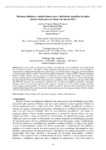Use este identificador para citar ou linkar para este item:
http://www.alice.cnptia.embrapa.br/alice/handle/doc/915454Registro completo de metadados
| Campo DC | Valor | Idioma |
|---|---|---|
| dc.contributor.author | FONSECA, L. A. M. | pt_BR |
| dc.contributor.author | FILHO, M. M. | pt_BR |
| dc.contributor.author | HOTT, M. C. | pt_BR |
| dc.contributor.author | AUAD, A. M. | pt_BR |
| dc.contributor.author | HAMADA, E. | pt_BR |
| dc.date.accessioned | 2012-02-14T11:11:11Z | pt_BR |
| dc.date.accessioned | 2012-02-14T11:11:11Z | pt_BR |
| dc.date.available | 2012-02-14T11:11:11Z | pt_BR |
| dc.date.available | 2012-02-14T11:11:11Z | pt_BR |
| dc.date.created | 2012-02-14 | pt_BR |
| dc.date.issued | 2011 | pt_BR |
| dc.identifier.citation | In: SIMPÓSIO BRASILEIRO DE SENSORIAMENTO REMOTO, 15., 2011, Curitiba. Anais... São José dos Campos: INPE, 2011. | pt_BR |
| dc.identifier.uri | http://www.alice.cnptia.embrapa.br/alice/handle/doc/915454 | pt_BR |
| dc.description | This study aimed to understand the influence of temperature on the distribution of the aphid Sipha Flava in Brazilian territory. The aphid is widely distributed geographically and can cause serious damage in several cultures, among them the sugar cane, wheat, barley, rye and many species of grasses. For the elaboration of thematic maps related to studies, were used the monthly temperature averages of IPCC (Intergovernamental Panel on Climate Change). These averages are divided into seven raster maps that contain at each pixel the average regarding the size of 30? (half degree). At the first map the average temperature of the past that includes the years between 1961 and 1990. The other maps show a prediction of the averages for the years 2020, 2050 and 2080. For each year were prepared two scenarios. The first shows an optimistic perspective (the global warming will not be very intense) and the other presents a pessimistic view (the global warming will bring drastic changes to global climate). The software ArcGIS was used for separation of the temperature classes and to make the final maps. The results showed that when considering only the temperature, there could be reducing at the area of action of the animal. | pt_BR |
| dc.language.iso | por | pt_BR |
| dc.rights | openAccess | pt_BR |
| dc.subject | GIS | pt_BR |
| dc.subject | Pulgão amarelo | pt_BR |
| dc.title | Mudanças climáticas e cenários futuros para a distribuição geográfica do pulgão amarelo (Sipha flava) no Brasil, com base no IPCC. | pt_BR |
| dc.type | Artigo em anais e proceedings | pt_BR |
| dc.date.updated | 2012-02-14T11:11:11Z | pt_BR |
| dc.subject.thesagro | Praga de planta | pt_BR |
| dc.subject.thesagro | Mudança Climática | pt_BR |
| dc.subject.thesagro | Sistema de Informação Geográfica | pt_BR |
| dc.subject.nalthesaurus | Climate change | pt_BR |
| dc.subject.nalthesaurus | Sipha flava | pt_BR |
| riaa.ainfo.id | 915454 | pt_BR |
| riaa.ainfo.lastupdate | 2012-02-14 | pt_BR |
| dc.contributor.institution | LETÍCIA D'AGOSTO MIGUEL FONSECA, UFJF; MÁRCIO MALAFAIA FILHO, UFJF; MARCOS CICARINI HOTT, CNPGL; ALEXANDER MACHADO AUAD, CNPGL; EMILIA HAMADA, CNPMA. | pt_BR |
| Aparece nas coleções: | Artigo em anais de congresso (CNPMA)  | |
Arquivos associados a este item:
| Arquivo | Descrição | Tamanho | Formato | |
|---|---|---|---|---|
| 2011AA14.pdf | 532.89 kB | Adobe PDF |  Visualizar/Abrir |









